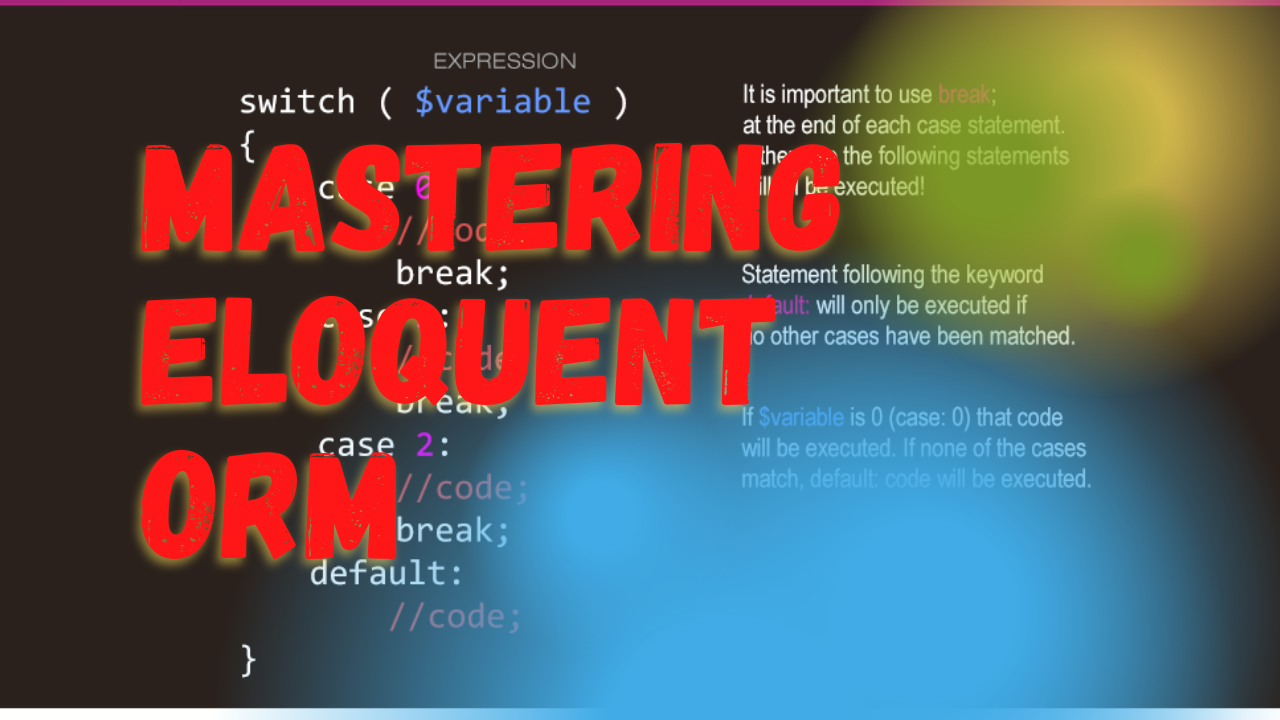Eloquent ORM is Laravel's built-in ORM (Object-Relational Mapping) system, which simplifies the interaction between your application and its database. It provides a beautiful, simple ActiveRecord implementation for working with your database. Each database table has a corresponding "Model" which is used to interact with that table. In this guide, we will delve into how to effectively use Eloquent ORM to enhance your Laravel database management practices.
Introduction to Eloquent ORM
Eloquent ORM represents each table in your database as a model that you interact with. Working with Eloquent allows for more readable, maintainable, and developer-friendly code. It abstracts complex SQL queries into simple and direct database operations.
Setting Up Eloquent Models
To get started, you should define models corresponding to the tables in your database. Here’s a basic example of a model:
use Illuminate\Database\Eloquent\Model;
class User extends Model
{
// Model content here
}
This model will automatically be linked to a database table named users.
Basic CRUD Operations
Eloquent simplifies CRUD (Create, Read, Update, Delete) operations. For instance, creating a new record can be done as follows:
$user = new User;
$user->name = 'John Doe';
$user->email = 'john@example.com';
$user->save();
Reading, updating, and deleting records are also streamlined with Eloquent’s easy-to-use methods.
Database Migrations
Laravel’s migration system works directly with Eloquent ORM to manage your database schema over time. A migration class contains methods to run and reverse database operations, like creating or dropping tables:
php artisan make:migration create_users_table --create=users
This command creates a migration file for a new users table.
Relationships
Eloquent supports several types of relationships such as:
- One to One: A direct relationship between two entities.
- One to Many: A single model owns multiple models.
- Many to Many: A relationship where the model has many relationships, and each relationship instance could belong to many models.
Defining these relationships in Eloquent is straightforward:
class Post extends Model
{
public function user()
{
return $this->belongsTo(User::class);
}
}
This snippet defines a relationship where many posts belong to one user.
Advanced Eloquent Tips
-
Eager Loading: To reduce the number of queries to the database, Eloquent can "eager load" relationships when you query the model.
$users = User::with('posts')->get(); -
Mutators and Accessors: Customize how you set and retrieve attributes of your models.
public function setPasswordAttribute($value) { $this->attributes['password'] = bcrypt($value); } -
Scopes: Define common queries you can reuse throughout your application.
public function scopeActive($query) { return $query->where('active', 1); }
Conclusion
Mastering Eloquent ORM will significantly enhance your capabilities in managing databases with Laravel. By leveraging features such as migrations, model relationships, and advanced methods like eager loading and mutators, you can write cleaner, more efficient code. This not only improves performance but also makes maintaining and updating your application simpler.
Embrace the power of Eloquent in your Laravel projects for a more robust and streamlined database management experience.
This blog post is designed to be informative for both beginners and experienced Laravel developers, integrating essential Eloquent ORM functionalities and advanced features for effective database management.




